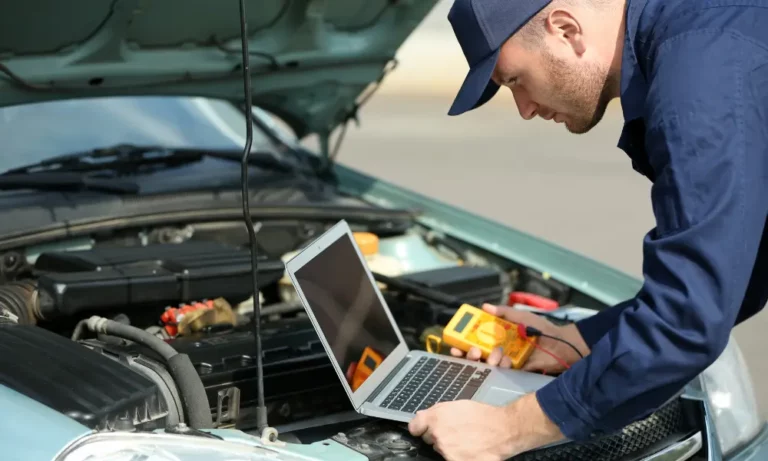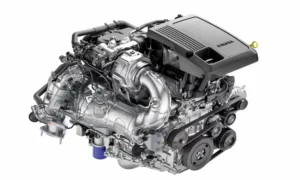Dealing with a check engine light on your Duramax can be frustrating, especially when it’s due to a code you’re not familiar with. The P01F0 code indicates that your coolant temperature has dropped below the standard diagnostic threshold. Understanding this can help you address the issue quickly and efficiently. You might be dealing with a thermostat problem or a faulty coolant temperature sensor. Read on to find out how to fix it and keep your Duramax running smoothly.
Symptoms of a P01F0 Code
When your Duramax engine throws a P01F0 code, it means the coolant temperature has dropped below the diagnostic monitoring temperature. This can trigger various issues that you need to be aware of to diagnose and address the problem effectively.
Visual Indicators
One of the first things you may notice is the Check Engine Light turning on. This light is an important alert that shouldn’t be ignored, especially if it remains on. Additionally, your dashboard will often display a low coolant temperature warning. This can be misleading if the actual coolant level is fine but the sensor is faulty. Sometimes, you might also observe the coolant temperature gauge behaving erratically, which can signal that something is wrong with the Engine Coolant Temperature sensor.
Performance Issues
Performance can be impacted as well. One common symptom is that the engine may take longer to warm up. This is especially noticeable in colder climates. Your vehicle might also experience rough idling or even stalling in extreme cases. This can happen because the engine isn’t reaching its optimal operating temperature. You may also notice that your fuel efficiency decreases, as the engine compensates for the perceived low temperature. All these issues can add unnecessary stress to your engine, making it crucial to address the P01F0 code promptly.
Potential Causes of the P01F0 Error
The P01F0 error code commonly appears due to problems with the thermostat or issues related to the sensor and its circuits. Understanding these causes can help you diagnose and fix the problem efficiently.
Thermostat Failures
A faulty thermostat is a frequent culprit for the P01F0 error. The thermostat regulates your engine’s temperature by controlling coolant flow. If the thermostat gets stuck open, it allows too much coolant to flow, causing the engine to run cooler than it should. This can trigger the P01F0 code.
On the other hand, a bad thermostat that doesn’t open correctly will lead to overheating, which might feel counterintuitive but can also cause erroneous readings. Replacing the old thermostat with a new one usually resolves these issues. If you’ve replaced the thermostat but still see the code, double-check the installation and consider the possibility of receiving a defective part.
Sensor and Circuit Complications
Sometimes, the sensor itself may be the problem. The Engine Coolant Temperature (ECT) sensor monitors the coolant temperature and sends this information to your vehicle’s computer. If the sensor is malfunctioning, it can send incorrect data, triggering the P01F0 code. Inspect the wiring and connectors around the sensor for any signs of damage. A loose or corroded connector can disrupt the signal, leading to inaccurate readings.
In addition to wiring issues, circuit problems within the sensor can also trigger this error. Make sure the sensor itself is tested and, if necessary, replaced. Often, just cleaning the connectors can resolve intermittent issues. Check these areas carefully to ensure that you’re not missing a simple fix.
Solving the P01F0 Code Issue
The P01F0 code is a common problem in Duramax engines that often points to issues with the thermostat or related sensors. Fixing this issue usually involves replacing the thermostat or repairing sensors and wiring.
Thermostat Replacement
One of the primary solutions for the P01F0 code is replacing the thermostat. New thermostats, or T-Stats, can help regulate your engine’s temperature better. If your coolant temp is dropping below the diagnostic monitoring level, your current thermostat might be faulty.
Before beginning, it’s wise to safeguard your hands and eyes by using gloves and safety goggles. Drain the coolant to prevent spills, then locate and remove the old thermostat. Install the new one, ensuring it’s the correct match for your Duramax engine. For most users, the AC Delco brand is highly recommended due to its reliability.
After installation, refill the coolant, checking for any leaks. This process may involve some labor but can often be done with basic tools. Be sure to monitor the engine’s temperature over the next few days to confirm the fix.
Sensor and Wiring Repairs
Sometimes, the P01F0 code is triggered by faulty sensors or wiring. Specifically, the Engine Coolant Temp (ECT) sensor can cause temperature misreadings. If you see the check engine light come back on after replacing the thermostat, consider inspecting the ECT sensor.
Start by locating the sensor, often near the thermostat. Disconnect the wiring and remove the sensor, replacing it with a new one if necessary. Check the wiring for any wear or damage, as this could lead to false readings. Repair or replace any damaged wires to ensure accurate data transmission.
If you are not comfortable performing these tasks, professional labor may be required. A mechanic can diagnose wiring issues more accurately and ensure that the new sensor is installed correctly. Regular maintenance checks can also prevent future occurrences of the P01F0 code.
Maintenance Tips to Avoid P01F0 Code
Keeping your Duramax in top shape can help you avoid the P01F0 code. Key areas include regular check-ups and maintaining your coolant system properly.
Regular Check-Ups
Regularly checking your vehicle is essential. Aim to inspect the engine coolant temperature sensor, wiring, and connectors to ensure they are working properly. A faulty sensor can cause incorrect temperature readings, leading to the P01F0 code.
Verify that the thermostat is functioning correctly and that it is maintaining the proper operating temperature, typically around 180°F. Thermostats that stick open can cause coolant temperatures to drop, triggering the P01F0 code. Regularly checking these components can help you catch problems early.
Don’t overlook the importance of scanning tools. Using an OBD-II scanner helps you read fault codes and analyze performance. Catching issues early means fewer problems down the road.
Coolant System Maintenance
Maintaining the coolant system is crucial. Start by ensuring you have the right type and proper level of coolant. Low or incorrect coolant can lead to the coolant temp dropping below the required level.
Regularly flush and refill your coolant system. Old coolant can become contaminated and lose its effectiveness, impacting your engine’s operating temperature. Flushing the system removes debris and old fluid, keeping it clean.
Replace your thermostats if they appear to be faulty. Faulty thermostats may not regulate the engine temperature correctly, causing the P01F0 code to appear. It’s a good idea to check your thermostats at least once a year.
Inspecting hoses and connections is also important. Ensure there are no leaks or damage. Leaks can lead to low coolant levels and, subsequently, lower engine temperatures. These maintenance steps can help you avoid the P01F0 code and keep your Duramax engine running smoothly.
Impact of P01F0 Code on Vehicle Performance
The P01F0 code on a Duramax engine can significantly affect your diesel vehicle’s fuel efficiency and engine health. Understanding these impacts can help you maintain optimal performance and avoid costly repairs.
Fuel Efficiency
When the P01F0 code appears, it indicates issues with your engine’s thermostat or coolant temperature. This can cause improper combustion. Your diesel vehicle might burn more fuel than usual, reducing MPG (Miles Per Gallon).
A malfunctioning thermostat can also lead to the engine running cooler than necessary. This impacts both MPG and performance, as your engine may not reach its peak operating temperature. Moreover, if the engine takes longer to warm up, your trips will consume more fuel.
Pay attention to changes in your fuel efficiency, as they might be a warning sign that needs immediate attention.
Engine Health Concerns
The P01F0 code can have serious effects on your engine’s health. A faulty thermostat may affect the powertrain. It can cause fluctuating engine temperatures, leading to increased wear and tear.
Continuing to drive with this code may also damage the catalytic converter. When the engine doesn’t operate at the right temperature, emissions control can be affected. This not only hampers performance but also places more stress on other components, like the head gasket.
Regular monitoring and prompt action can prevent more severe damage to your engine, ensuring smoother and safer trips.
Regional Considerations for P01F0
The P01F0 code in Duramax engines can be influenced by different climate conditions. Your truck’s performance may vary depending on the local weather and temperature.
Warm Climate Implications
In warm regions like Florida, high temperatures can affect your coolant temperature. If the coolant doesn’t cool efficiently, it may cause issues with your thermostat.
Your engine may struggle to maintain a stable temperature if the thermostat fails. High coolant temperatures might lead to engine overheating. Regularly check and replace the coolant and thermostat to keep your Duramax running smoothly in hot climates. Use a quality coolant mix designed for high temperatures.
Cold Climate Challenges
In colder areas, low temperatures can cause the coolant temp to drop below the diagnostic monitoring threshold, triggering the P01F0 code. Cold coolant temps can make the thermostat stay open longer than usual, affecting engine efficiency.
Your engine might not warm up properly, making it harder to start and operate in cold weather. It’s crucial to check and maintain your coolant and thermostat to ensure your engine stays warm enough to perform well. Consider using a winter-specific coolant and engine block heater in colder climates.















